SAVE MOTHER EARTH
Africa – Green Agriculture & Climate Change
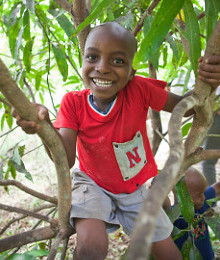
http://kofiannanfoundation.org
Sustainable agriculture is the practice of farming using principles of ecology, the study of relationships between organisms and their environment. It has been defined as „an integrated system of plant and animal production practices having a site-specific application that will, over the long term:Satisfy human food and fiber needs Make the most efficient use of non-renewable resources and on-farm resources and integrate, where appropriate, natural biological cycles and controls Sustain the economic viability of farm operations Enhance the quality of life for farmers and society as a whole. Read More: > Here <
Fair trade is an organized social movement and market-based approach that aims to help producers in developing countries make better trading conditions and promote sustainability. The movement advocates the payment of a higher price to producers as well as social and environmental standards. It focuses in particular on exports from developing countries to developed countries, most notably handicrafts, coffee, cocoa, sugar, tea, bananas, honey, cotton, wine, fresh fruit, chocolate, flowers and gold. Read More: > HERE <
AGRA ALLIANCE works to achieve a food secure and prosperous Africa through the promotion of rapid, sustainable agricultural growth based on smallholder farmers. Smallholders–the majority women–produce most of Africa’s food, and do so with minimal resources and little government support. AGRA aims to ensure that smallholders have what they need to succeed: good seeds and healthy soils; access to markets, information, financing, storage and transport; and policies that provide them with comprehensive support. Through developing Africa’s high-potential breadbasket areas, while also boosting farm productivity across more challenging environments, AGRA works to transform smallholder agriculture into a highly productive, efficient, sustainable and competitive system, and do so while protecting the environment.
AFRICA LOSES ROUGHLY $4 Billion in soil nutrients each year, costing farmers in lost productivity and eroding the continent’s ability to feed itself. But simple solutions can reverse the trend. AGRA’s programs in soil health are working to restore 6.3 million hectares of degraded farmland over 10 years. Whether it’s setting Africa’s first digital soil map to monitor the problem and inform decision making or promoting the use of lime to counteract western Kenya’s acidic soils or increasing the use of fertilizer microdosing by farmers in the Sahel, AGRA is focused on stemming the crisis and transforming Africa’s soils form a curse into blessing for smallholder farmers.
www.globalhealthfreedom.org www.foodfreedomejournal.org
Father Godfrey Nzamujo is the founder and director of the Songhai Centre, a pioneering farm, training and research centre in Porto Novo, Benin. Begun in 1985 on a single hectare of land, the Songhai project has expanded to six sites in Benin and one in Nigeria. With the motto ‚Commitment to Excellence‘, Songhai symbolises Nzamujo’s belief that Africa’s ecological characteristics are advantages rather than impediments. Father Nzamujo was awarded the Hunger Project’s Africa Prize for Leadership in 1993, and is the author of Songhaï: When Africa lifts up its head. Stirring revolution in African Rice: www.new-ag.info
Songhaï aspires to develop alternatives allowing Africans to stand on their feet through agricultural entrepreneurship, in an integrated development framework enhancing agriculture, industry and services. This development is centred, above all, on human development, the realization of local resources and the appropriation of foreign techniques and technologies.
VISION To establish an entrepreneurial platform of integrated development, an enabling environment to find social, economic, technical, organizational solutions that will take Africans out of poverty, pulling them towards autonomy and sustainable socioeconomic development.
VOCATION To draw Africa into a development mentality which consists in developing new strengths in spite of socioeconomic, cultural and environmental constraints.
Save Biodiversity – Herbs & Food Regulation
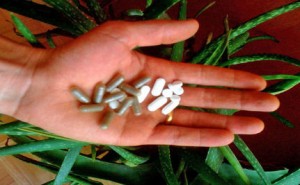
www.gmcontaminationregister.org www.un.org/humanrightsday/2010
www.anh-europe.org/freedom-health-choice
www.saveourherbs.org.uk/Petition.html
The Traditional Herbal Medicinal Products Directive, 2004/24/EC, was established to provide a regulatory approval process for herbal medicines in the European Union (EU), and came into force on 30 April 2004 . Previously, there was no formal EU wide authorisation procedure, so each EU member stated regulated these types of products at the national level. Under this regulation, all herbal medicinal products are required to obtain an authorisation to market within the EU. Those products marketed before this legislation came into force can continue to market their product until 30 April 2011, under the transitional measures defined in the Traditional Herbal Medicinal Products Directive. Once this time limit has expired, all herbal medicinal products must have prior authorisation before they can be marketed in the EU. Read More: > HERE <
Ayurveda (Sanskrit: आयुर्वेद; Ä�yurveda, the „science of life“) or ayurvedic medicine is a system of traditional medicine native to India and practiced in other parts of the world as a form of alternative medicine.In Sanskrit, the word ayurveda consists of the words Ä�yus, meaning „longevity“, and veda, meaning „related to knowledge“ or „science“.Evolving throughout its history, ayurveda remains an influential system of medicine in South Asia.The earliest literature on Indian medical practice appeared during the Vedic period in India.The Suśruta SaṃhitÄ� and the Charaka SaṃhitÄ� were influential works on traditional medicine during this era.Over the following centuries, ayurvedic practitioners developed a number of medicinal preparations and surgical procedures for the treatment of various ailments and diseases. Read More: > HERE <
Health Choice – Have you heard the hype about future restrictions on natural health products? Find out how the ‚boil-the-frog-slowly‘ method masterminded by governments and transnational corporations is out to restrict YOUR FREEDOM OF CHOICE in the area of natural healthcare.
Read on…… find out here what’s really going on. This is about your future, and that of the next generation. Where in the world are restrictions most imminent?
> European Union (EU) – Canada – United States of America (USA) – New Zealand <
As a consequence of moves to harmonise global food laws, concerted attempts to control consumer access to natural heath products are being made by governments and trans-national corporations.
At a global level the regulatory framework is being developed through the Codex Alimentarius Commission (see our Codex campaign page).
The system of control essentially moves natural health products from a category of food to products requiring pre-market authorisation, where the authorisation systems being used or proposed are very onerous and so lock out large numbers of products (e.g. around 50% of pre-2004 products in Canada).
All this is being enacted under the often conflicting guises of ‘consumer protection’ and ‚free trade‘, nearly always creating a situation where big business gets what it wants while our freedom to choose natural health products is dramatically curtailed.
Inappropriate EU legislation could effectively steam-roller ancient and effective medicine cultures, such as Ayurveda, out of existence.
Certain combinations of herbal products, and those containing significant levels of vitamins and minerals, will be prohibited.
The EU’s Human Medicinal Products Directive (HMPD), issued ostensibly to protect consumers from medical disasters such as the thalidomide tragedy, now has a scope so broad that it can be used to classify certain foods, herbs and nutrients – even water – as drugs.
Many herbal products would be evaluated by inappropriate pharmaceutical criteria, rather than by practicing medical herbalists and others with specific expertise in the field of traditional medicines.
The cost of complying with these pharma-friendly criteria will be prohibitively expensive for many small to medium size enterprises and there could be serious consequences for small herb-producing farmers and communities in non-EU countries.
As you may know The Traditional Herbal Medicinal Products Directive 2004/24/EC (THMPD) of the European Union will have long-term and far-reaching implications for Ayurveda and other Traditional Systems of Medicine (TSMs), specially for the manufacturers and practitioners of these systems. / Senate Bill S510 Makes it illegal to Grow, Share, Trade or Sell Homegrown Food — Section 510(k) and the device approval process. Food Freedom warns about the consequences from this bill.
Jede(r) von uns benutzt im täglichen Leben Heilpflanzen in Form von Tees, chinesische, ayurvedische Mittel, Kräutermischungen etc. Dies soll alles verboten werden! Lest selbst: Ab April 2011 soll das Gesetz für Nahrungsergänzungsmittelund Heilkräuter (THMPD – Traditional Herbal Medical Product Directive) EU-weit durchgesetzt werden.
Das bedeutet:Die auf Teemischungen basierende Kräuterheilkunde wäre dannwahrscheinlich um die Hälfte der dort eingesetzten Kräuter beraubt, da es wenig „wissenschaftliche Forschung“ über gebräuchliche, einheimische Kräuter gibt und diese dann ohne aufwändige Forschung keine Zulassung alsArzneimittel bekämen.
Fast alle chinesischen und ayurvedischen Heilpflanzen und ein guter Teil der europäischen Heilpflanzen sollen mit dieser EU-Novelle verboten undaus dem Handel genommen werden.
Die Gründe liegen auf der Hand: Die Pharmaindustrie hätte dieNaturheilkunde „Schachmatt“ gesetzt und könnte diesen wachsenden Marktfür sich übernehmen.Jetzt sind wir alle gefragt und können noch Einfluss nehmen.In Deinem, Ihrem, Eurem und unserem Interesse.

www.sourcewatch.org/Global_Corporations
-
www.abtei-st-hildegard.de ( WHO owns Hildegard ? )
International Year of Forests 2011
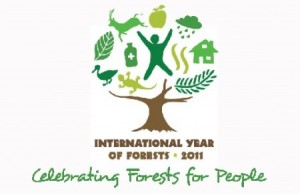
http://www.un.org/en/events/iyof2011/
http://www.illegal-logging.info
The year 2011 was declared the International Year of Forests by the United Nations to raise awareness and strengthen the sustainable forest management, conservation and sustainable development of all types of forests for the benefit of current and future generations. Forests are an integral part of global sustainable development. According to World Bank estimates, more than 1.6 billion people depend on forests for their livelihoods. The forest product industry is a source of economic growth and employment, with global forest products traded internationally in the order of $270 billion. The UN’s Food and Agriculture Organization (FAO) estimates that every year 130,000 km² of the world’s forests are lost due to deforestation. Conversion to agricultural land, unsustainable harvesting of timber, unsound land management practices, and creation of human settlements are the most common reasons for this loss of forested areas. Read More: >HERE<
Indigenous rights are those rights that exist in recognition of the specific condition of the indigenous peoples. This includes not only the most basic human rights of physical survival and integrity, but also the preservation of their land, language, religion and other elements of cultural heritage that are a part of their existence as a people. This can be used as an expression for advocacy of social organizations or form a part of the national law in establishing the relation between a government and the right of self-determination among the indigenous people living within its borders, or in international law as a protection against violation by actions of governments or groups of private interests. Read More: > HERE <
Welcome to the International Year of Forests, 2011 (Forests 2011) Web site, a global platform to celebrate people’s action to sustainably manage the world’s forests. The United Nations General Assembly declared 2011 as the International Year of Forests to raise awareness on sustainable management, conservation and sustainable development of all types of forests.
Here, you will find information regarding events being organised throughout the International Year as well as interactive web tools and resources to promote dialogue on forests. Tell us how you plan to celebrate “forests for people” during 2011, so that we may showcase your stories and initiatives through this website. www.un.org/en/events/iyof2011
United Nations, New York, 2 November 2010 – Member States of the United Nations have adopted a new 10-year global strategy designed to halt the loss of the world biological diversity, with countries agreeing to draft national implementation plans to safeguard genetic resources within two years. / This video shows how palm oil is threatening Southeast Asia’s tropical peatlands. Due to drainage of the swamps, the peat oxidates and releases huge amounts of CO2 into the atmosphere. For more information, see www.ckpp.org
United Nations Forum on Forests (UNFF) –In October 2000, the Economic and Social Council of the United Nations (ECOSOC), in its Resolution 2000/35 established the United Nations Forum on Forests (UNFF), a subsidiary body with the main objective to promote “… the management, conservation and sustainable development of all types of forests and to strengthen long-term political commitment to this end…”based on the Rio Declaration, the Forest Principles, Chapter 11 of Agenda 21 and the outcome of the IPF/IFF Processes and other key milestones of international forest policy. The Forum has universal membership, and is composed of all Member States of the United Nations and specialized agencies. www.un.org/esa/forests/index.html
The International Indigenous Forum on Biodiversity (IIFB) was formed During the III Conference of the Parties to the Convention on Biological Diversity (COP III) in Buenos Aires, Argentina, in November 1996. The IIFB is a collection of representatives from indigenous governments, indigenous non-governmental organizations and indigenous scholars and activists that rganize around the Convention on Biological Diversity (CBD) and other important international environmental meetings to help coordinate indigenous strategies at these meetings, provide advice to the government parties, and influence the interpretations of government obligations to recognize and respect indigenous rights to the knowledge and resources.
http://iifb.indigenousportal.com/2010/11/01/closing-statement cbd
The CBD is an important international environmental convention, because it contains numerous passages that recognize traditional resource and knowledge rights, the most important of which is Article 8(j).
CBD – UN Convention on Biological Diversity
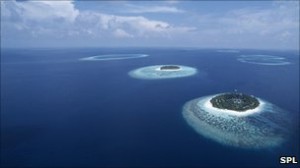
* Small island states are looking at ways to evacuate their entire populations, says UN chief
Biodiversity is the variation of life forms within a given ecosystem, biome, or for the entire Earth. Biodiversity is often used as a measure of the health of biological systems. The biodiversity found on Earth today consists of many millions of distinct biological species, which is the product of nearly 3.5 billion years of evolution. 2010 is the International Year of Biodiversity. READ MORE: > HERE <
The Convention on Biological Diversity (CBD), known informally as the Biodiversity Convention, is an international legally binding treaty. The Convention has three main goals: 1. conservation of biological diversity (or biodiversity);2. sustainable use of its components; and 3. fair and equitable sharing of benefits arising from genetic resources. In other words, its objective is to develop national strategies for the conservation and sustainable use of biological diversity. It is often seen as the key document regarding sustainable development. Read More: >HERE<
The Millennium Development Goals (MDGs) are eight international development goals that all 192 United Nations member states and at least 23 international organizations have agreed to achieve by the year 2015. They include eradicating extreme poverty, reducing child mortality rates, fighting disease epidemics such as AIDS, and developing a global partnership for development. Read More: > HERE <
Bio Diversity, preventing Deadline Life http://www.cbd.int/ – After suffering decades of obscurity, biodiversity, and the importance of saving it, is finally rising to the top of the international agenda. But will political declarations translate into the resources and action that are so urgently needed?
The United Nations General Assembly dedicated a high level summit to biodiversity which gave much-needed political impetus for a sustained global response to the crisis facing the natural world.
IUCN Director General Julia Marton-Lefèvre explains why the meeting of the Convention on Biological Diversity, in Nagoya on 18 October, is so important for the future of our planet. / Millenium Development Goals for 2015 -In the year 2000, 189 leaders from around the world met at the historic Millenium Summit in New York.According to the then Secretary-General of the UN, Kofi Annan, the UNs role for the next millenium will be crucial; making it a focal point for joint efforts in a world that presents worrisome statistics that endanger the perpetuation of generations to come.
The International Union for Conservation of Nature (IUCN) is an international organization dedicated to natural resource conservation. The stated goal of the organization is to help the world find pragmatic solutions to the most pressing environment and development challenges. Read More: > HERE <
IUCN, which helped develop the Convention and plays a key role in its implementation, will be present at the conference, trying to ensure that the latest biodiversity science underpins the decisions taken there and that governments commit to an ambitious, yet realistic plan to halt the loss of biodiversity.
Environmental migrants are people forced to migrate away from their homeland due to sudden or long-term changes to their local environment. When the migration is considered to be forced and not a matter of choice, the term environmental refugee is also used. Additionally, if the causes for the migration are believed to be due to global warming related environmental disasters, the term climate refugee is sometimes used. Read More: > HERE <
The Office of the United Nations High Commissioner for Refugees (UNHCR; www.unhcr.org), also known as The UN Refugee Agency is a United Nations agency mandated to protect and support refugees at the request of a government or the UN itself and assists in their voluntary repatriation, local integration or resettlement to a third country. Its headquarters are in Geneva, Switzerland. The UNHCR has won two Nobel Peace Prizes in 1954 and 1981. Read More: >HERE<
COP 16 Climate Change and Agrar Solutions
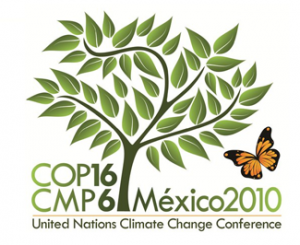
Kofi Atta Annan (born 8 April 1938) is a Ghanaian diplomat who served as the seventh Secretary-General of the United Nations from 1 January 1997 to 31 December 2006. Annan and the United Nations were the co-recipients of the 2001 Nobel Peace Prize for his founding the Global AIDS and Health Fund to support developing countries in their struggle to care for their people. Read More: > HERE <
The 2010 United Nations Climate Change Conference is being held in Cancún, Mexico, from 29 November to 10 December 2010.[1] The conference is officially referred to as the 16th session of the Conference of the Parties (COP 16) to the United Nations Framework Convention on Climate Change (UNFCCC) and the 6th session of the Conference of the Parties serving as the meeting of the Parties (CMP 6) to the Kyoto Protocol.In August 2010, Ban Ki-moon stated that he doubts member states will reach a new global agreement to address global warming, but after the Tianjin talks in October Christiana Figueres, executive secretary of the UN Framework Convention on Climate Change (UNFCCC), said, „This week has got us closer to a structured set of decisions that can be agreed in Cancun … This is the greatest societal and economic transformation that the world has ever seen.“ Read More: > HERE <
AGRA www.agra-alliance.org works to achieve a food secure and prosperous Africa through the promotion of rapid, sustainable agricultural growth based on smallholder farmers. Smallholders–the majority women–produce most of Africa’s food, and do so with minimal resources and little government support. AGRA aims to ensure that smallholders have what they need to succeed: good seeds and healthy soils; access to markets, information, financing, storage and transport; and policies that provide them with comprehensive support.
Through developing Africa’s high-potential breadbasket areas, while also boosting farm productivity across more challenging environments, AGRA works to transform smallholder agriculture into a highly productive, efficient, sustainable and competitive system, and do so while protecting the environment.
www.google.com/cop15 Learn about the impacts of our changing climate, and how groups are working to cope with them.
http://www.ienearth.org Established in 1990 within the United States, IEN was formed by grassroots Indigenous peoples and individuals to address environmental and economic justice issues (EJ). IEN’s activities include building the capacity of Indigenous communities and tribal governments to develop mechanisms to protect our sacred sites, land, water, air, natural resources, health of both our people and all living things, and to build economically sustainable communities.IEN accomplishes this by maintaining an… (read more)Mission:In 1991, near the sacred Bear Butte in South Dakota, near 500 Native people came together at the outdoor 2nd Annual IEN Protecting Mother Earth gathering. At this gathering, this Unifying Principle and the Environmental Code of Ethics were written.
Mission Statement – The Indigenous Peoples of the Americas have lived for over 500 years in confrontation with an immigrant society that holds an opposing world view. As a result we are now facing an environmental crisis which threatens the survival of all natural life. In 1991, near the sacred Bear Butte in South Dakota, near 500 Native people came together at the outdoor 2nd Annual IEN Protecting Mother Earth gathering. At this gathering, this Unifying Principle and the Environmental Code of Ethics were written.
Unifying Principles – The Indigenous Peoples of the Americas have lived for over 500 years in confrontation with an immigrant society that holds an opposing world view. As a result we are now facing an environmental crisis which threatens the survival of all natural life. We believe in unified action, sharing of information, and working together with mutual respect. We recognize we must assert our sovereignty and jurisdictional rights through the application of our traditional laws and recognizing our traditional forms of leadership of our indigenous nations. We stand on principles of empowering and supporting each other to take direct, informed action and affect our ability to protect our lands from contamination and exploitation. By attempting to fulfill our responsibility to defend our mother earth we are assuring the survival of our unborn generations.The members of IEN are unified in our recognition that the traditional teachings, lifestyles, spirituality, cultures and leadership of our people as well as the survival of our future generations, are entirely dependent upon our respectful relationship with the natural world and our responsibility to the sacred principles given to us by the creator.
„SNAP-SHOT“ of environmental and economic justice issues in indigenous lands (US-CANADA): 1. Toxic contaminants, agricultural pesticides and other industrial chemicals that disproportionately impact Indigenous peoples, especially subsistence and livestock cultures.2. Inadequate governmental environment and health standards and regulations.3. Clean up of contaminated lands from mining, military, and other industry activities.4. Toxic incinerators and landfills on and near Indigenous lands.5. Inadequate solid and hazardous waste and wastewater management capacity of Indigenous communities and tribes.6. Unsustainable mining and oil development on and near Indigenous lands.7. National energy policies at the expense of the rights of Indigenous peoples.8. Climate change and global warming.9. Coal mining and coal-fired power plants resulting in mercury contamination, water depletion, destruction of sacred sites and environmental degradation.10. Uranium mining developments and struggles to obtain victim compensation to Indigenous uranium miners, millers, processors and Downwinders of past nuclear testing experiments.11. Nuclear waste dumping in Indigenous lands.12. Deforestation.13. Water rights, water quantity and privatization of water.14. Economic globalization putting stress on Indigenous peoples and local ecosystems.15. Border justice, trade agreements and transboundary waste and contamination along the US/Mexico/Canada borders and other Indigenous lands worldwide.16. Failure of the US government to fulfill its mandated responsibility to provide funding to tribes and Alaska villages to develop and implement environmental protection infrastructures.17. Backlash from US state governments giving in to the lobbying pressures of industry and corporations against the right of tribes to implement their own water and air quality standards.18. Protection of sacred, historical and cultural significant areas.19. Biological diversity and endangered species.20. Genetically modified organisms impacting the environment, traditional plants and seeds and intellectual rights of Indigenous peoples – bio-colonialism.21. Economic blackmail and lack of sustainable economic and community development resources.22. Just transition of workers and communities impacted by industry on and near Indigenous lands.23. Urban sprawl and growth on and near Indigenous lands.24. Failure of colonial governments and their programs to adequately consult with or address environmental protection, natural resource conservation, environmental health, and sacred/historical site issues affecting traditional Indigenous lands and its Indigenous peoples.25. De-colonization and symptoms of internalized oppression/racism/tribalism.26. And many others ..
Compiled by the INDIGENOUS ENVIRONMENTAL NETWORK
http://en.wikipedia.org/wiki/Kyoto_Protocol
http://en.wikipedia.org/wiki/350.org , www.350.org
- Watch the UN Climate Talks in Cancun, Mexico – LIVE www.oneclimate.net
- http://timesofindia.indiatimes.com/home/environment/global-warming
- http://www.environmentallawresource.com , http://earthjournalism.net
- http://www.indigenousclimate.org , http://www.hecac.org
- http://www.earthpeoples.org/CLIMATECHANGE/Ind.PeoplesGuide .pdf
- Articles on CLIMATE CHANGE
- Meet Indigenous Environmental Network, friends, fans at fb
- Meet Eco Walk the Talk, friends, fans at fb
- Meet International Forum on Globalization, studies, friends, fans at fb
- Meet COP 16, Cancun, studies, friends, fans at fb
- Meet 100 Million Voices for a Real Climate Deal in Mexico 2010 at fb
- Peace, Paix, 和平, Salam, Shalom, Pace, Mir, Friede, Paz, Shanti, Heiwa…
Monks lead march to save Himalayas
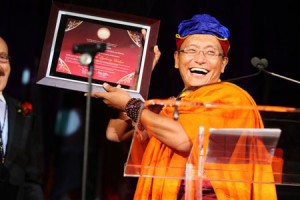
The Drukpa Kargyu school (Dzongkha: or simply Drukpa school, is a branch of the Kagyu school of Tibetan Buddhism. It is considered to be one of the Sarma or „new“ schools of Tibetan Buddhism. Within the Drukpa Lineage, there are further sub-schools, most notably the eastern Kham tradition and middle Drukpa school which prospered in Ladakh and surrounding areas. In Bhutan the Drukpa Lineage is the dominant school and state religion. Read More: > HERE <
www.live2love.org On 19th September 2010, His Holiness the Gyalwang Drukpa, founder of Live To Love, a new world-wide charity specializing in building the world’s most advanced eco-friendly schools and teaching young women leadership skills, received the United Nations‘ Millennium Development Goal (MDG) Award for those efforts.At a star-studded event headlined by American actress Christie Brinkley, Ghanian-American hip-hop artist, Blitz the Ambassador American saxophonist, Dave Koz and joined by heads of state and leading dignitaries gathered to honor governments and individuals making substantial contributions toward fulfilling the UN’s Millennium Development Goals, His Holiness the Gyalwang Drukpa was feted for Live To Love’s efforts to “create compassion into action.”The annual MDG Awards provide a platform to raise awareness about the critical work of the United Nations and honor and celebrate the exceptional work of select national governments and individuals contributing to the achievement of the MDGs around the world.
Guru Rinpoche highlighted many times in his teachings and biography that so long as the descendents of the famous and great Tibetan King Trisong Deutsan is there, his blessing will always be there. As we all know Trisong Deutsan is the direct emanation of Manjushri, the Bodhisattva of Great Wisdom. These days, our beloved king of Ladakh, Trinlay Namgyal, has not been well, and he is definitely a genuine descendent of Trisong Deutsan. This is the reason why I went to Ladakh for a day trip and stayed there only for an hour.
Out of respect and care, I went to Ladakh to visit the king who has been my good friend for a very long time. I had never been to Ladakh for such a short trip. Even if I wanted to stay, I had no choice, there is already the Sikkim Eco Pad Yatra program starting soon. I am very happy that I saw him, I hope he was happy to see him. He was very seriously sick inside, but he has no pain. I am writing not only because he is a dear friend of mine, but I believe in Guru Rinpoche’s words and I know for sure that the king definitely carries the blood of Trisong Deutsan and therefore the blessing of Guru Rinpoche.
A short video showing the walking pilgrimage journey from Lahaul to Ladakh (from 23rd May to 1st July 2009) undertaken by His Holiness the Gyalwang Drukpa, His Eminence Kyabje Khamtrul Rinpoche, several Rinpoches, monks and nuns and lay followers – about 750 humans and 320 mules. /Join His Holiness the Gyalwang Drukpa and 750 nuns, monks, & friends of the Drukpa Lineage as they trek 400 kilometers across the Himalayas in a grassroots movement to elevate environmental awareness, promote education for women, and celebrate the heritage of a culture in peril. www.walking.drukpa.com OPTION C (22nd-28th December 2010) & OPTION D (24th-28th December 2010) ARE NOW AVAILABLE.
Now, I am on the way preparing for the Sikkim Eco Pad Yatra and catching up with my busy schedule. Let’s see how it will go. It seems that it’s being arranged quite well, due to help from my friends and students, especially Drukpa Publications whom I asked to arrange this through my own office. Just as our last pad yatra in Ladakh last year, this time also I took the opportunity to ask Rigzin Namgyal to arrange this for us. I know that Rigzin Namgyal along with Lotus’s help is trying his best to make all of us very comfortable and successful. Maybe next time I should be fair enough not to demand him that badly in making these difficult arrangements, such as in locations unfamiliar for him, but this time I have to apologise that I did that.
For the forthcoming Sikkim Eco Pad Yatra, I have 2 very special guests who will be joining with us, that is Gyalwa Lorepa and Drukpa Yongdzin Rinpoche. I am sure that all of you will see all the updates at the Drukpa Facebook or from different channels. I will leave you here until I return from the Pad Yatra. Take care and let’s move on and get ready for the Pad Yatra and a new year.
- http://www.khoryug.com
- http://ladakh.drukpa.com/monasteries.htm
- http://economictimes.indiatimes.com/environment/
- Article on UN Millenium Goals
- Meet Drukpa Order, studies, friends, fans at fb
- Meet Mind & Life Institute, studies, friends, fans at fb
- Meet Ecotourism, studies, friends, fans at fb
- Meet Ecobuddhism, studies, friends, fans at fb
Medha Patkar – Water and Enviroment

www.rightlivelihood.org/narmada.html
www.citizen-news.org/Articles Medha Patkar
Medha Patkar (Marathi: मेधा पाटकर, born December 1, 1954) is an Indian social activist. She is known for her role in Narmada Bachao Andolan. Author Jacques Leslie devoted a third of his book, Deep Water: The Epic Struggle Over Dams, Displaced People, and the Environment (Farrar, Straus & Giroux, 2005), to a portrait of Patkar as she planned to drown herself in rising reservoir waters behind the Sardar Sarovar Dam, whose construction she fought for two decades. Read More: > HERE <
World Water Day is observed on March 22 since 1993 when the United Nations General Assembly declared March 22 as World Day for Water. This day was first formally proposed in Agenda 21 of the 1992 United Nations Conference on Environment and Development (UNCED) in Rio de Janeiro, Brazil. Observance began in 1993 and has grown significantly ever since. The UN and its member nations devote this day to implementing UN recommendations and promoting concrete activities within their countries regarding the world’s water resources. Each year, one of various UN agencies involved in water issues takes the lead in promoting and coordinating international activities for World Water Day. Since its inception in 2003, UN-Water has been responsible for selecting the theme, messages and lead UN agency for the World Day for Water.
In addition to the UN member states, a number of NGOs promoting clean water and sustainable aquatic habitats have used World Day for Water as a time to focus public attention on the critical water issues of our era. Read More: > HERE <
The construction of large dams on the River Narmada in central India and its impact on millions of people living in the river valley has become one of the most important social issues in contemporary India. Through this website, we the friends of the Narmada valley and its people hope to present the perspective of grassroots people’s organisations on the issue. Read an introduction to the issue.
The Friends of River Narmada is an international coalition of organisations and individuals (mostly of Indian descent). The coalition is a solidarity network for the Narmada Bachao Andolan (Save the Narmada Movement) and other similar grassroots struggles in India. More info about us.
www.worldwaterforum5.org 2nd World Water Forum in The Hague, Netherlands, in 2000. Speech by Medha Patkar against privatization of water. John Briscoe (WorldBank) held his speech just before Patkar.
www.unwater.org/worldwaterday International World Water Day is held annually on 22 March as a means of focusing attention on the importance of freshwater and advocating for the sustainable management of freshwater resources.
An international day to celebrate freshwater was recommended at the 1992 United Nations Conference on Environment and Development (UNCED). The United Nations General Assembly responded by designating 22 March 1993 as the first World Water Day.
Each year, World Water Day highlights a specific aspect of freshwater. On this page, we present a brief overview of the different themes that have been the focus of World Water Day celebrations.
Nature Conservancy – Biodiversity Projects

Conservation International (CI) is a nonprofit organization headquartered in the Washington, D.C. metropolitan area, that seeks to protect Earth’s biodiversity „hotspots,“ high-biodiversity wilderness areas as well as important marine regions around the globe. The group is also known for its partnerships with local non-governmental organizations and indigenous peoples. CI was founded in 1987 by Spencer Beebe and Peter Seligmann and now has a staff of more than 900 employees. Its work occurs in more than 45 countries, primarily in developing nations in Africa, Asia, Oceania, and the Central and South American rainforests. Building upon a strong foundation of science, partnership, and field demonstration, Conservation International empowers societies to responsibly and sustainably care for nature for the well-being of humanity. Read More: > HERE <
Hans Rosling (born July 27, 1948 in Uppsala, Sweden) is Professor of International Health at Karolinska Institute and Director of the Gapminder Foundation, which developed the Trendalyzer software system. From 1967 to 1974 he studied statistics and medicine at Uppsala University, and in 1972 he studied public health at St John’s Medical College, Bangalore. He became a licenced physician in 1976 and from 1979 to 1981 he served as District Medical Officer in Nacala in northern Mozambique. Rosling’s research has also focused on other links between economic development, agriculture, poverty and health in Africa, Asia and Latin America. He has been health adviser to WHO, UNICEF and several aid agencies. In 1993 he was one of the initiators of Médecins sans frontières in Sweden. Read More > Here <
Conservancy Yunnan The alpine ecosystems mountain areas that lie above the treeline – of northwestern Yunnan are some of the most biologically rich systems in the world. Home to such endangered species such as the snow leopard and blue sheep, this unique area provides important ecosystem services such as water storage, medicinal plants, and grazing for livestock. For example the rare snow lotus, which grows in the rocky upper slopes at elevations over 4,000 meters, is used by Tibetans to treat high blood pressure.
Unfortunately, these ecosystems are currently under siege by incompatible land uses and climate change. The Nature Conservancy has joined together with the Center for Biodiversity and Indigenous Knowledge (CBIK) and academic researchers to initiate a project focused on protecting these treasured and threatened ecosystems.
Goals • Gain a clear understanding of northwest Yunnan’s alpine ecosystem and identify immediate threats • Develop and implement climate adaptive conservation strategies based scientific, social, cultural, political, and economic factors • Maintain a healthy alpine ecosystem
What the Conservancy is Doing – During October 2003, the Conservancy and its partners traversed the mountain ranges of northwestern Yunnan collecting mapping data and investigating the ecological, political, and economic status of alpine areas across the project area. We interviewed local villagers, gathered information on ecological health, and set up initial photo monitoring sites to serve as the baseline for annual monitoring of these systems. During the course of 2004, we will work with partners and communities to continue research as well as begin to implement “no-regret” conservation strategies.
http://carlsafina.org , www.gapminder.org
http://www.ted.com The Gulf oil spill dwarfs comprehension, but we know this much: it’s bad. Carl Safina scrapes out the facts in this blood-boiling cross-examination, arguing that the consequences will stretch far beyond the Gulf — and many so-called solutions are making the situation worse.
Blue Ocean Institute – From Arctic Alaskan fishing villages to Zanzibar’s shores, the staff of Blue Ocean Institute studies and articulates how the ocean is changing and how everything humans do—both on land and at sea—affects the waters, wildlife, and people of our world. But gloomy environmental warnings and predictions don’t move people to make changes that can help our shared ocean. MacArthur Prize-winning scientist/author Dr. Carl Safina and Mercédès Lee created Blue Ocean Institute in 2003 as a unique voice of hope, guidance, and encouragement.
Blue Ocean Institute is the only conservation organization that uses science, art, and literature to inspire a closer bond with nature, especially the sea. We translate scientific information into language people can understand and use to make better choices on behalf of the sea. Whether you’re a fisherman, seafood lover, student, faith leader, parent, artist, or chef, our programs help you learn how and why you should protect our planet’s life-giving ocean.
Ocean Climate Change – This project is dedicated to turning the science of climate change effects on ocean life into stories that are accessible to policy, public, and scientific communities. We seek to identify those areas of research that are lacking attention, or are particularly complicated, and write articles in both academic and popular media formats about these underrepresented or important subjects.
“Climate change” is really “carbon change” and is not just about warming. We currently focus on how climate change alters ocean chemistry, and how that can affect every creature in the sea by forcing them to devote more energy to coping with excess carbon dioxide in the ocean. Since January, this initiative has already produced several articles, ranging from online journals to environmental faith-based magazines. Our published articles call for a wider appreciation and reporting of climate change effects on marine life. Please see our staff publications page to see articles on this issue.
SOS Water Poisoning, Health Care & Wells
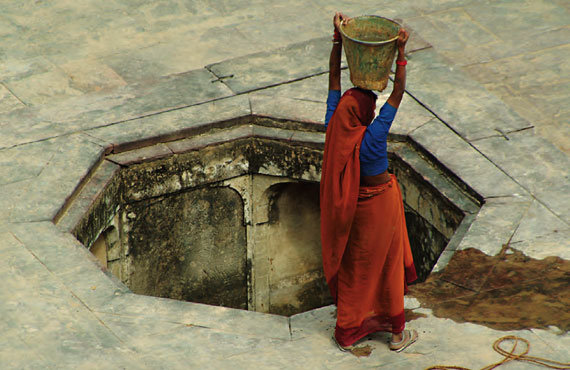
Arsenic_contamination_of_groundwater
The Bhopal disaster or Bhopal Gas Tragedy is the world’s worst industrial catastrophe. It occurred on the night of December 2-3, 1984 at the Union Carbide India Limited (UCIL) pesticide plant in Bhopal, Madhya Pradesh, India. UCIL was the Indian subsidiary of Union Carbide Corporation (UCC). Indian Government controlled banks and the Indian public held a 49.1 percent ownership share. In 1994, the Supreme Court of India allowed UCC to sell its 50.9 percent share. The Bhopal plant was sold to McLeod Russel (India) Ltd. UCC is now a subsidiary of Dow Chemical Company. A leak of methyl isocyanate (MIC) gas and other chemicals from the plant resulted in the exposure of several thousands of people. A leak of methyl isocyanate (MIC) gas and other chemicals from the plant resulted in the exposure of several thousands of people. Estimates vary on the death toll. The official immediate death toll was 2,259 and the government of Madhya Pradesh has confirmed a total of 3,787 deaths related to the gas release. Other government agencies estimate 15,000 deaths. Others estimate that 8,000 died within the first weeks and that another 8,000 have since died from gas-related diseases.
“ C L E A N U P “ : Chemicals (~390 tons) abandoned at the plant continue to leak and pollute the groundwater. Whether the chemicals pose a health hazard is disputed. Read More: > HERE <
The Sambhavna Trust is a charitable trust run by a group of eminent doctors, scientists, writers and social workers who have been involved with various aspects of the Union Carbide disaster ever since its occurrence in December 1984. The Chairperson of Sambhavna, Dr. PM Bhargava, was awarded the „Padma Bhushan“ by the President of India in 1986 and the „Legion d’Honneur“ in 1998 by the French government for his scientific and social contributions. Dr. H H Trivedi, former Professor at the Gandhi Medical College and Satinath Sarangi are the two Bhopal based trustees of Sambhavna.
Many are unaware that the disaster in Bhopal continues to this day. An estimated 120,000-150,000 survivors of the disaster are still chronically ill. Over 23,000 have died of exposure-related illnesses and more are dying still. Tens of thousands of children born after the disaster suffer from growth problems and far too many teenaged women suffer from menstrual disorders. TB is several times more prevalent in the gas-affected population and cancers are on the rise.
The Bhopal Medical Appeal was launched in 1994, when a man from Bhopal came to Britain to tell whoever would listen about the calamitous condition of the still suffering victims of the Union Carbide gas disaster. Those who met him learned that after ten years, the survivors had received no meaningful medical help. (Unless one is prepared to accept that aspirin is a cure-all for the dreadful illnesses visited on them.)
The survivors realised that they must help themselves, because nobody else would. They wanted to open their own free clinic for gas victims. They were joined in the UK by a few individuals who put the mechanics of the Appeal together. They were in turn joined in this effort by other like minded people. Our newsletter is called 777. The name arose from an attempt to capture the spirit of the Appeal. Someone suggested, ’saat, saat, saat‘, which in Hindi means ‚together, together, together‘, but with a slight twist of the tongue could also mean ’seven, seven, seven.‘ ‚We‘ means all of us, all together.
BhopalMedicalAppeal /Arsen Water Myanmar/Arsen Water Pakistan
Thirty years ago, Bangladeshi villages began pumping arsenic-laced water in a development project gone awry. Why will it take another 30 years to halt the biggest mass poisoning in history?
The story beggars belief. In the 1970s, international agencies headed by the United Nations Children’s Fund (UNICEF) began pumping millions of dollars of aid money into Bangladesh for tubewells to provide “clean” drinking water. According to the World Health Organization, the direct result has been the biggest outbreak of mass poisoning in history. Up to half the country’s tubewells, now estimated to number 10 million, are poisoned. Tens, perhaps hundreds of thousands will die.
Even now as the scale of the calamity emerges, nobody is admitting culpability. Not UNICEF, which initiated the tubewells programme and paid for the first 900,000 wells, nor the WORLD BANK, a fellow sponsor. Not the Bangladeshi government, or the foreign engineers and public health scientists who did not think to test the water for so long.
Arsenic contamination of groundwater is (not always natural!) a natural occurring high concentration of arsenic in deeper levels of groundwater, which became a high-profile problem in recent years due to the use of deep tubewells for water supply in the Ganges Delta, causing serious arsenic poisoning to large numbers of people. A 2007 study found that over 137 million people in more than 70 countries are probably affected by arsenic poisoning of drinking water.
Arsenic contamination of ground water is found in many countries throughout the world, including the USA. Approximately 20 incidents of groundwater arsenic contamination have been reported from all over the world. Of these, four major incidents were in Asia, including locations in Thailand, Taiwan, and Mainland China. South American countries like Argentina and Chile have also been affected. There are also many locations in the United States where the groundwater contains arsenic concentrations in excess of the Environmental Protection Agency standard of 10 parts per billion adopted in 2001.
Arsenic Catastrophe in Bangladesh: Project To Support the Poorest Rural Population in Bangladesh, Enhance Environmental Consciousness, Regain Traditional Wisdom. and Cultural Heritage . The people will invent more methods and survival strategies, if we really want to survive and refuse vested business interests of many western countries offering inadequate and expensive technologies. We need your help to make this extraordinary project a success. Every step of the project will be accompanied with on-line reports on this page, which will enhance your active participation.
Our goal is to help these people help themselves escape death. By the people, for the people, using simple, affordable methods….You can help by donating any amount: One arsenic free well costs less than 100 EUR – just donate 1 EUR. Solidarity for the poor- Also for Recent Cyclone Disastor: www.sos-arsenic.net
![]()
- www.unwater.org
- The immediate alternatives from http://www.sos-arsenic.net are:
- Deep tube wells in Southern Bangladesh, with special reference to saline water intrusion and improved drilling methods on a contaminated aquifer. „Arsenic free water trap“ at shallow depths. Rain water harvesting. Dug wells, only when „shallow water trap“ is not available. Low cost community based water purification units.
- New and immediate agricultural policy – „Flood Water Irrigation“.
- Regain traditional wisdom.
- http://en.wikipedia.org/wiki/Arsenic_poisoning
http://en.wikipedia.org/wiki/Arsenic_contamination_of_groundwater - http://www.unesco.org/courier/2001_01/uk/planet.htm <
- Meet Transparency International, friends, fans at fb <
- Meet the Bhopal Medical Appeal, friends, at fb <
- Meet Arsenic & Health Research in Bangladesh at fb <
Erwin Kräutler – Right Livelihood Award
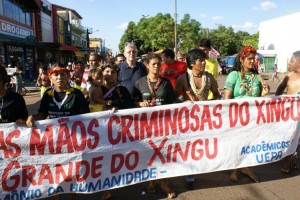
www.rightlivelihood.org/krautler.html
www.cimi.org.br (CIMI)
http://plattformbelomonte.blogspot.com
www.survivalinternational.org/news
The Right Livelihood Award, established in 1980 by Jakob von Uexkull, is an award that is presented annually, in early December, to honour those „working on practical and exemplary solutions to the most urgent challenges facing the world today“. An international jury, invited by the five regular Right Livelihood Award board members, decides the awards in such fields as environmental protection, human rights, sustainable development, health, education, and peace. Read More: > HERE <
Erwin Kräutler CPPS, auch Dom Erwin, (* 12. Juli 1939 in Koblach, Vorarlberg) ist römisch-katholischer Bischof und Prälat von Xingu, der flächenmäßig größten Diözese Brasiliens. 2010 wurde sein Einsatz für die Rechte der Indios und die Erhaltung des Amazonas-Urwalds mit dem alternativen Nobelpreis ausgezeichnet. Read More: > HERE <
Erwin Kräutler, a Catholic Bishop motivated by liberation theology, is one of Brazil’s most important defenders of and advocates for the rights of indigenous peoples. Already in the 1980s, he helped secure the inclusion of indigenous peoples‘ rights into the Brazilian constitution. He also plays an important role in opposing one of South America’s largest and most controversial energy projects: the Belo Monte dam.
Kräutler was born in Austria on July 12th, 1939, became a priest in 1965 and shortly after went to Brazil as a missionary. In 1978, he became a Brazilian citizen (though also keeping his Austrian citizenship). He worked among the people of the Xingu-Valley, who include indigenous peoples of different ethnic groups. In 1980, Kräutler was appointed Bishop of Xingu, the largest diocese in Brazil. From 1983-1991, and since 2006 he is the President of the Indigenous Missionary Council (CIMI) of the Catholic Church in Brazil.
Kräutler is motivated in his work by the teachings of liberation theology. He teaches that a Christian has to take the side of the powerless and to oppose their exploiters.
Working for indigenous peoples‘ rights – For five centuries, the population of Brazil’s indigenous peoples has constantly decreased – and the downward trend still continues. Today the causes are well-known and documented, including direct (yet rarely investigated) violence in connection with the appropriation of indigenous land; land grabs for energy, settlement, mining, industry, farming, cattle, and agribusiness projects; and military projects for national security that aim to open up areas.
During Kräutler’s presidency, CIMI has become one of the most important defenders of indigenous rights, with a focus on land rights, self-organisation and health care in Indian territories. In 1988, CIMI’s intensive lobbying helped secure the inclusion of indigenous people’s rights in the Brazilian Constitution. The Council has also raised awareness within the Church about indigenous people’s issues and rights.
Since 1992 and besides CIMI’s advocacy work, Kräutler has continued working tirelessly for the Xingu on the ground. The projects he has initiated include building houses for poor people, running schools, building a facility for mothers, pregnant women and children, founding a ‚refugio‘ for recuperation after hospital treatment, emergency aid, legal support, and work on farmers‘ rights and land demarcation.
Opposing the Belo Monte dam – For 30 years, Kräutler has been very active in the struggle against the plans for the huge Belo Monte dam on the Xingu River, nowadays heavily promoted by President Lula, which would be the third largest dam in the world. The dam would destroy 1000 square km of forest, flood a third of the capital city, Altamira, and create a lake of stagnant, mosquito-infested water of about 500 square km, which would make life in the rest of the city very difficult. 30,000 people would have to be relocated.
In 1989 the World Bank pulled out of a plan to build a series of huge hydroelectric dams on the Xingu River in the centre of Brazil. The dams were judged a potential social and environmental catastrophe, highlighted by the largest combined demonstration by the indigenous tribal people of the area ever staged. This is the same battle which is being supported by Avatar director James Cameron and actress Sigourney Weaver.
-
Even like Xingu River the largest water distribution of Amazonas, also Yamuna River for Ganges River, the consequences about non enviromental assessment creating negativ enviromental impacts, loss of biodiversity and cultural heritage. Scientists round the globe sounding Alarm about the freshwater qualities and Rivers.
Sustainable Development, Water & Tourism
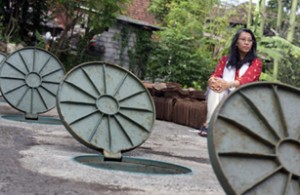
http://balifokus.asia/balifokus
“When public services fail to serve all populations equally, if people get more trust and empowerment, most of the problems can be solved closer to the source in a more sustainable way with less costs than the conventional and centralized approach.” — Yuyun Ismawati, Indonesia, Sustainable Development
Bali is an Indonesian island located in the westernmost end of the Lesser Sunda Islands, lying between Java to the west and Lombok to the east. It is one of the country’s 33 provinces with the provincial capital at Denpasar towards the south of the island. With a population recorded as 3,551,000 in 2009, the island is home to the vast majority of Indonesia’s small Hindu minority. About 93.2% of Bali’s population adheres to Balinese Hinduism, while most of the remainder follow Islam. It is also the largest tourist destination in the country and is renowned for its highly developed arts, including dance, sculpture, painting, leather, metalworking, and music. Read > HERE <
Tourism in Bali – The island of Bali, Indonesia, always has been an enchanting place for foreigners. Images of rice paddies, beautiful beaches and temples and a fascinating culture draw tourists from all around the world. It was only in the 1970s that tourism in Bali started to develop. The industry did bring many benefits to the island, such as increased employment, and its transformation from a marginal economic area of the country to the most important area in Indonesia after Jakarta. However, Bali s tourism development occurred quickly and without proper planning.
Therefore, tourism has caused some serious damage to the island’s environment. As one example, the sleepy village of Kuta became a tourist enclave, with its natural resources degraded and its infrastructure overwhelmed. This paper will discuss the origins of tourism in Bali and how it has affected the island’s environment. It also will discuss proposed alternatives to let tourism and the environment coexist in a more balanced fashion.
Description – Mass tourism in Bali began in 1969 with the construction of the new Ngurah Rai International Airport, allowing foreign flights directly into the island, rather than arrival via Jakarta. Three years later, in 1972, the Master Plan for the Development of Tourism in Bali was drawn by the government of Indonesia. The government wanted to make Bali the „showcase“ of Indonesia and to serve as the model of future tourism development for the rest of the country. The plan was financed by the United Nations Development Programme and carried out by the World Bank.
A Solution to Stop Garbage Destroying Tourism – Tourism took off on the island in the 1970s. The economic benefits are clear: the island went from being economically marginal to ranking second only to the country’s capital, Jakarta, in wealth creation. The island received more than 2.38 million tourists in 2009, up 14.5 percent compared with 2008, according to Ida Komang Wisnu, head of the provincial statistics office. But tourism produces on average five kilograms of waste a day per tourist – 10 times what the average Indonesian produces (Bali Fokus).
In the past, the traditional way of serving food in Indonesia was to wrap it in, or serve it on, a palm leaf: a biodegradable approach. But with the huge expansion in use of plastics and non-biodegradable packaging, the waste disposal problem is out of control.
In Indonesia, government garbage disposal services tend to collect between 30 and 40 percent of solid waste, most of this from high income communities. The majority poor population are left to fend for themselves when it comes to waste disposal.
A solution by Yuyun Ismawati, an environmental engineer and consultant, has since 1996 focused on helping poor communities find ways to safely dispose of waste.
Yuyun Ismawati is an Indonesian environment engineer. She has worked on design of city and rural water supply systems, and later on designing systems for safe waste management.
In 2000, she started her own NGO – Bali Fokus – and opened a waste management facility in the Bali village of Temesi. The recycling plant employs 40 people from the village, who sort garbage into recyclables, compost and residual waste. Income from the recycled waste and compost goes to helping local farmers.
Bali Fokus’ successful approach has now been replicated in six other sites on the nearby island of Java. And the government of Indonesia has promised to help create 15 more each year.
In 2009 Ismawati won the Goldman Award which honors grassroots environmental heroes from the six inhabited continental regions: Africa, Asia, Europe, Islands and Island Nations, North America, and South and Central America.
She is also working on using decentralized grassroots approaches to bringing sewage disposal and clean water to communities.
ALL IS NOT WELL – Environmentalists and some government officials say the problems could become worse unless significant investment is made and people started conserving water.
„If there’s no change in this fast-growing tourism development, it’s not impossible that Bali will suffer from a water crisis in the next 10 years,“ said Agung Wardana from Wahli, a leading Indonesian environment group.
„The current emphasis is the development of the tourism industry which results in changes in productive and open lands that reduce the ability to provide ground water. This is made worse by neglect of river system,“ he added.
Many Balinese rely on wells for water but in some areas, particularly in the tourist centre of Kuta, so much is being extracted that salt water is fouling supplies. Rubbish and sewage being dumped into rivers was also affecting water quality.
Bali has few reservoirs and many of its rivers are used to channel water to an intricate traditional network of channels to feed the island’s iconic emerald rice fields.
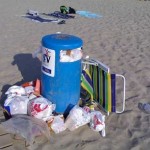
85% of Balis freshwater tapped or not clean, most freshwater urged by tourism
„Since the development of tourism industry is very fast, in the future we will have a big problem,“ said Ida Cakra Sudarsana, head of the mining and energy division in the Bali Department of Public Works.
He said Bali’s problems were not lack of ground or river water but one of development and he urged an expansion of reservoirs and tree-planting schemes in Bali’s volcanic mountains to curb deforestation and water-conservation schemes.
„We’re supposed not to face a water shortage until at least 2025,“ said Raka Dalem, a senior lecturer in environmental management and ecotourism at Bali’s Udayana University. „But in actual situation we do face a shortage situation because of bad management of water resources.
„During the wet season, lots of water flows to the sea and then in the dry season we face a bad problem. That’s the main issue, how we manage the water so that it can be used throughout the year,“ he said.
While tourist businesses and farmers diverting water from Bali’s lakes were partly to blame, there was also significant damage caused by the felling of forest trees near catchment areas for cash crop cultivation, experts said.
A lack of trees meant water and silt rushed into the lakes during downpours but there were less regular river flows during the dry season. It also meant that water was not being absorbed into the ground to fill underground basins that will provide for Bali’s water needs in the future. Water conservation is crucial.
Already at Nusa Dua, an enclave of five-star hotels and a major conference centre, the government has banned deep-well water. All big hotels in Nusa Dua used recycled waste water for watering gardens. Many luxury villas also used water-recycling systems, said Nils Wetterlind of ecovilla developer Tropical Homes.
But most villas also have large swimming pools filled from well or town water. And very few villas used solar/natural gas electricity systems now widely available or used certified plantation timber, meaning they weren’t very green.
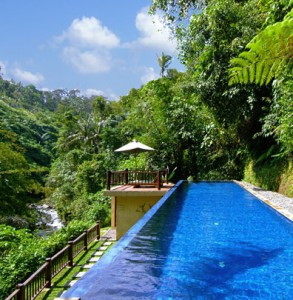
- Resources:
- Tourism in Bali – http://www1.american.edu/ted/balitour.htm
- www.nowpublic.com/solution
- A guide to establishing recycling projects based on experience in Mongolia. Website: http://tinyurl.com/yfkn2dp
- A video showing the problem of waste disposal in poor communities in Jakarta.
- Website: http://www.videosift.com/video/Garbage-ring-The-slums-of-Jakarta-Indonesia
- http://www.theaustralian.com.au/news/developers-drawn-to-tourist-magnet
- http://www.alertnet.org/thenews/newsdesk/SP117259.htm
- http://www.time.com/Heroes of the Environment 2009
- Meet Human Rights Watch, friends, fans at fb <
- The International Ecotourism Society (TIES), friends, fans at fb <
- Blue Planet Foundation, studies, friends, fans, at fb <
- Meet International Year of Biodiversity, friends, fans at fb <
- Meet Support UN Resolution on the Right to Water and Sanitation <
- Bali Institute for Global Renewal (BIGR),studies,friends, fans <
- Meet COP16 to the UN Framework Convention on Climate Change at fb <
Safe Passage to Cancun – UN Climate Deal
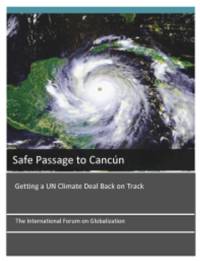
Globalization (or globalisation) describes a process by which regional economies, societies, and cultures have become integrated through a global network of communication, transportation, and trade. The term is sometimes used to refer specifically to economic globalization: the integration of national economies into the international economy through trade, foreign direct investment, capital flows, migration, and the spread of technology. However, globalization is usually recognized as being driven by a combination of economic, technological, sociocultural, political, and biological factors. The term can also refer to the transnational circulation of ideas, languages, or popular culture through acculturation. Read More: >HERE<
The United Nations Framework Convention on Climate Change (UNFCCC or FCCC) is an international environmental treaty produced at the United Nations Conference on Environment and Development (UNCED), informally known as the Earth Summit, held in Rio de Janeiro from 3 to 14 June 1992. The objective of the treaty is to stabilize greenhouse gas concentrations in the atmosphere at a level that would prevent dangerous anthropogenic interference with the climate system. The parties to the convention have met annually from 1995 in Conferences of the Parties (COP) to assess progress in dealing with climate change. In 1997, the Kyoto Protocol was concluded and established legally binding obligations for developed countries to reduce their greenhouse gas emissions. Read More: > HERE <
THE INTERNATIONAL FORUM ON GLOBALIZATION (IFG) is a North-South research and educational institution composed of leading activists, economists, scholars, and researchers providing analysis and critiques on the cultural, social, political, and environmental impacts of economic globalization. Formed in 1994, the IFG came together out of shared concern that the world’s corporate and political leadership was rapidly restructuring global politics and economics on a level that was as historically significant as any period since the Industrial Revolution.
Yet there was almost no discussion or even recognition of this new „free market,“ or „neoliberal“ model, or of the institutions and agreements enforcing this system—the World Trade Organization (WTO), the International Monetary Fund (IMF), the World Bank, the North American Free Trade Agreement (NAFTA) and other such bureaucracies. In response, the IFG began to stimulate new thinking, joint activity and public education about this rapidly rising economic paradigm.
Unique in its diversity, depth, and breadth, the IFG works through an active international board of key citizen movement leaders; a small, dedicated staff; and a network of hundreds of associates representing regions throughout the world on a broad spectrum of issues. Our work is closely linked to social justice and environmental movements, providing them with critical thinking and frameworks that inform campaigns and activities „on the ground.“
The IFG produces numerous publications; organizes high-profile, large public events; hosts many issue-specific seminars; coordinates press conferences and media interviews at international events; and participates in many other activities that focus on the myriad consequences of globalization. During the last few years, the IFG has launched a pioneering program that focuses on alternative visions and policies to globalization that are more just, equitable, democratic, accountable, and sustainable for people and the planet.
COP16 – SOURCE WATCH click here , IFG Utube TV click here
POSITION STATEMENT – The International Forum on Globalization (IFG) promotes equitable, democratic, and ecologically sustainable economies.We were formed in response to widespread concerns over economic globalization, a process dominated by international institutions and agreements unaccountable to democratic processes or national governments. Speaking the language of „free-trade“ and poverty alleviation, organizations like the WTO, the IMF, and the World Bank impose a development model which seems designed to benefit transnational corporations over workers; foreign investors over local businesses; and wealthy countries over developing nations.
When the IFG first presented its globalization critique a decade ago, the economic globalization model was widely accepted. Today, the institutions of globalization are undergoing a crisis of legitimacy. Corporate scandals such as Enron and Worldcom, the failures of IMF and World Bank policies and programs, the recent break down of WTO negotiations, and other events reveal that the benefits of globalization that were promised by its advocates have not come to fruition.
Even the policy consensus that governed development thinking during most of the past two decades, the so-called Washington Consensus, has broken up with notable „defectors“ such as former World Bank chief economist Joseph Stiglitz and the director of the Earth Institute at Columbia University Jeffrey Sachs. From conservative circles, the Meltzer Commission, along with Walter Wriston, Henry Kissinger, and William Simon also have issued strong critiques against Bretton Woods institutions.
But perhaps the greatest indictment against globalization is the unprecedented global citizen movement that has emerged during the last decade, demonstrating that the benefits of globalization have gone to the few at the exclusion of many. This extraordinary alliance brings together numerous diverse groups and perspectives — union members, farmers, landless peasants, people of faith, women’s organizations, youth organizations, environmentalists, AIDS and other health activists, politicians, civil servants, immigrants, peace and human rights organizations, intellectuals, consumer advocates, and many others.
While promoters of globalization proclaim that this model is the rising tide that will lift all boats, citizen movements find that it is instead lifting only yachts. In fact, the actual beneficiaries are obvious. In the United States, for example, during the period of the most rapid economic globalization — the 1990s — the top corporate executives of the largest global companies made salaries and gained options in the tens of millions of dollars (often in the hundreds of millions), while real wages of ordinary workers either remained stagnant or rose insignificantly.
The Institute for Policy Studies (IPS) reports that American CEOs were paid an average of 458 times more than production workers in 2000, up from 104 times in 1991. The degree of wealth concentration of the world’s 475 billionaires is now worth the combined income of the bottom half of humanity.
Meanwhile, the United Nations Development Program’s 1999 Human Development Report revealed that the gap between the wealthy and the poor both within and between countries is growing steadily larger. It notes inequities of the current global trading system as one of the key contributors to this trend. Even the U.S. Central Intelligence Agency (CIA) concurred. In its Global Trends 2015 report, issued in 2000, the CIA maintained that globalization will create „an even wider gap between regional winners and losers than exists today. [Globalization’s] evolution will be rocky, marked by chronic volatility and a widening economic divide…deepening economic stagnation, political instability, and cultural alienation. [It] will foster political, ethnic, ideological, and religious extremism, along with the violence that often accompanies it.“
All over the world, evidence points to the failure of globalization and the so-called „free trade“ policies of the last decade – loss of jobs and livelihoods, displacement of indigenous peoples, massive immigration, rapid environmental devastation and loss of biodiversity, increases in poverty and hunger, and many additional negative effects.
-
IFG PROGRAMS AND ACTIVITIES:
-
CLIMATE CHANGE: THE “COPENHAGEN TO CANCUN CONVENINGS” OF CIVIL SOCIETY NETWORKS TO PRESS INTERNATIONAL INSTITUTIONS TOWARD POSITIVE ACTIONS
-
FALSE SOLUTIONS: PUBLICATIONS SERIES
-
INDIGENOUS RIGHTS: ACTUALIZATION OF THE UN DECLARATION ON THE RIGHTS OF INDIGENOUS PEOPLES (UNDRIP)
-
TRADE & FINANCE: TRANSFORMING GLOBAL RULE-MAKING
-
POPULATION: DOES POPULATION MATTER? BRIDGING THE COMMUNICATIONS GAP BETWEEN KEY COMMUNITIES ON THE IMPORTANT ISSUE OF ADJUSTING TO GLOBAL CARRYING CAPACITY
-
POST CAPITALISM: STEPS TO NEW ECONOMIES OF SUSTAINABILITY, EQUITY, JUSTICE AND PEACE
Gasland – Fracking & Health Concerns
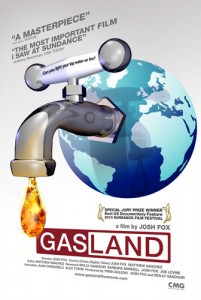
www.blueplanetproject.net/RightToWater
www.unwater.org/flashindex.html
Hydraulic fracturing (called „frac jobs“or „frac’ing“ in the industry and recently, „fracking“ by the media) is a process that results in the creation of fractures in rocks, the goal of which is to increase the output of a well. The most important industrial use is in stimulating oil and gas wells, where hydraulic fracturing has been used for over 60 years in more than one million wells. On the other hand, high-volume horizontal slickwater fracturing is a recent phenomenon. The fracturing is done from a wellbore drilled into reservoir rock formations to enhance oil and natural gas recovery. Hydraulic fractures may be natural or man-made and are extended by internal fluid pressure which opens the fracture and causes it to grow into the rock. Man-made fluid-driven fractures are formed at depth in a borehole and extend into targeted rock formations. The fracture width is typically maintained after the injection by introducing a proppant into the injected fluid. Proppant is a material, such as grains of sand, ceramic, or other particulates, that prevent the fractures from closing when the injection is stopped. Natural hydraulic fractures include volcanic dikes, sills and fracturing by ice as in frost weathering. Considerable controversy surrounds the current implementation of hydraulic fracturing technology in the United States. Environmental safety and health concerns have emerged and are being debated at the state and national levels. Read More: > HERE <
„The largest domestic natural gas drilling boom in history has swept across the United States. The Halliburton-developed drilling technology of „fracking“ or hydraulic fracturing has unlocked a „Saudia Arabia of natural gas“ just beneath us. But is fracking safe?
When filmmaker Josh Fox is asked to lease his land for drilling, he embarks on a cross-country odyssey uncovering a trail of secrets, lies and contamination. A recently drilled nearby Pennsylvania town reports that residents are able to light their drinking water on fire. This is just one of the many absurd and astonishing revelations of a new country called GASLAND. Part verite travelogue, part expose, part mystery, part bluegrass banjo meltdown, part showdown.“
GASLAND will be broadcast on HBO through 2012. To host a public screening in your community please click here. The DVD will be on sale in December 2010.
UN: Water is a Human Right – The UN General Assembly passed a resolution today on the human right to water and sanitation. The official tabulation: 122 states voted yes, 41 states abstained—including the U.S.—and no state voted against. First things first: Hooray! This is a fantastic victory that finally establishes the critical recognition that all human beings have a right to water—a vital and natural resource upon which all of us depend.
The passing of this resolution, which was introduced by the Bolivian government, should affirm that we are finally—and collectively—advancing the conversation about the human right to water. This is especially rewarding for our water activists and our network of allies who have been working on this issue for the past 10 years.
While the United States’ abstention is disappointing, we still have reason to be enthusiastic. U.S. municipalities and states are increasingly recognizing water as a human right. As this trend gains momentum, so will our ability to pressure the federal government to affirm the right to water in global forums
This resolution is not legally binding, but we are grateful for the opportunity to take one big step in the right direction. To all the water activists everywhere who have worked tirelessly to promote water as a human right—and to all the nation states who voted in support of the resolution today—congratulations!
We eventually hope to make the human right to water an internationally recognized law. Until then, we must continue to educate and inform on behalf of our mission. www.foodandwaterwatch.org
BHOPAL – SOS Water Poisoning, Health Care & Wells: The story beggars belief. In the 1970s, international agencies headed by the United Nations Children’s Fund (UNICEF) began pumping millions of dollars of aid money into Bangladesh for tubewells to provide “clean” drinking water. According to the World Health Organization, the direct result has been the biggest outbreak of mass poisoning in history. Up to half the country’s tubewells, now estimated to number 10 million, are poisoned. Tens, perhaps hundreds of thousands will die.
Why? Because nobody tested for the natural poison, arsenic, widely found in underground water. And when a doctor did find traces of the metal, and when Bangladeshi villagers did start turning up at doctors’ surgeries with the tumours and telltale signs of arsenic poisoning, the results were swiftly buried so that nobody made the connection.
Like Hydroelectric Dam Projects or Oil & Gas Drilling, and the Desaster of Mexican Gulf Oil Spill showing that drilling without testing the underground seems to be dangerous and harmfull for enviroment & health.
Even now as the scale of the calamity emerges, nobody is admitting culpability. Not UNICEF, which initiated the tubewells programme and paid for the first 900,000 wells, nor the WORLD BANK, a fellow sponsor. Not the Bangladeshi government, or the foreign engineers and public health scientists who did not think to test the water for so long. Read more: > HERE <
Jean Ziegler: The Empire of Shame
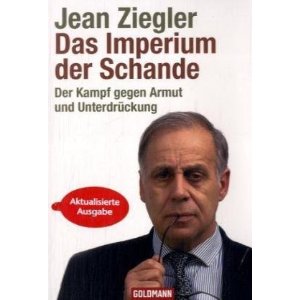
www.unwatch.org/The Right of Food
Jean Ziegler (born April 19, 1934) is a former professor of sociology at the University of Geneva and the Sorbonne, Paris. He was a Member of Parliament for the Social Democrats in the Swiss federal parliament from 1981 to 1999. Nominated by Switzerland, he was the United Nations Special Rapporteur on the Right to Food from 2000 to April 2008. On 26 March 2008, he was elected for one year into the Human Rights Council Advisory Committee. Despite objections from UN Watch he received 40 out of 47 votes to finish first in a field of seven candidates. He is also member of the advisory board of the human rights organization Business Crime Control. Read More: > HERE <
The Codex Alimentarius (Latin for „food code“ or „food book“) is a collection of internationally recognized standards, codes of practice, guidelines and other recommendations relating to foods, food production and food safety. Its name derives from the Codex Alimentarius Austriacus. Its texts are developed and maintained by the Codex Alimentarius Commission, a body that was established in 1963 by the Food and Agriculture Organization of the United Nations (FAO) and the World Health Organization (WHO). Read More: > Here <
Jean Ziegler: „This World Order is not just murderous, it is absurd“ – Jean Ziegler is a senior professor of sociology at the University of Geneva and the Sorbonne, Paris. He is one of the leading protagonists in the world for the anti-globalization movement and has taken a continued stand for human rights, the right to food and a decent livelihood for all people. In 2000, he was appointed by the United Nations Commission on Human Rights as the UN Special Rapporteur on the Right to Food. He kept this position until March 2008 in spite of much hard criticism from the neoliberal leaders of the U.S. and the UN for his categorical stand for equal rights for all people. His continued fight against poverty, hunger and chronic malnutrition in the world has been a constant embarrassment to the West.
He is now the Swiss member of the UN Human Rights Council. His is one of the very few voices heard on the international scene speaking out loudly against the criminal financial system that has put the world in its present tailspin with hunger and lack of human rights, devastating a continually increasing mass of the world’s 6.6 billion population. Unfortunately he is not very well known in the Anglophone world, where, for obvious political reasons, his humanitarian message is hushed up. He says in „Empire of Shame“: „One thing is certain: world agriculture, in the current state of productivity, could feed twice the number of today’s global population. So it is not a matter of fate: hunger is man made.“
„Empire of Shame – A Conversation with Jean Ziegler“ He has written several books on the lack of justice in the world, condemning the vicious global power system that allows close to a billion people to be the chronic victims of hunger and permanent malnutrition and denouncing crimes committed in the name of global finance and capitalism.
See: Hunger in the Midst of Plenty, By Girish Mishra. FULL ARTICLE: * HERE *
> Books from Jean Ziegler by Amazon < / Codex Alimentarius Video
In your opinion, has anyone measured the scale of the impact of this crisis on the South? Jean Ziegler. „When the rich lose weight, the poor die,“ says a proverb. World hunger is increasing at a breathtaking rate. Every five seconds a child under ten dies of hunger in the world and 100 000 people die every day from hunger or its immediate after-effects.
Since 2000, the West said there was no money. However, on October 12, at the Élysée Palace, in three and a half hours, the 27 EU countries released €1 700 billion for credit to be used between banks and to raise the floor of pure capital for the banks from 3 % to 5%. 1% of these €1 700 billion would suffice to eliminate the eight tragedies afflicting the Third World countries. This world order is not only mortal, it is absurd.
- IRRI Rice Research Institute & Conference <
- Codex Alimentarius – Food Book & Food Code <
- PALMOIL – Biofuel, Climate Change, Food, etc. <
- http://www.bhookh.com , www.foodrelief.org
- http://en.wikipedia.org/world_food_price_crisis
- Jean Ziegler: The Hatred for the West <
- www.worldproutassembly.org/archives <
- Jean Ziegler: About World Hunger <
- http://en.wikipedia.org/wiki/Food_vs._fuel
H2Oil: Oil & Tar Sands The Documentary

www.indigenouspeoplesissues.com
Oil sands, also known as tar sands, or extra heavy oil, are a type of bitumen deposit. The sands are naturally occurring mixtures of sand or clay, water and an extremely dense and viscous form of petroleum called bitumen. They are found in large amounts in many countries throughout the world, but are found in extremely large quantities in Canada and Venezuela. Oil sands reserves have only recently been considered to be part of the world’s oil reserves, as higher oil prices and new technology enable them to be profitably extracted and upgraded to usable products. Oil sands are often referred to as unconventional oil or crude bitumen, in order to distinguish the bitumen extracted from oil sands from the free-flowing hydrocarbon mixtures known as crude oil traditionally produced from oil wells. Read More: > HERE <
What Are Tar Sands? – Tar sands (also referred to as oil sands) are a combination of clay, sand, water, and bitumen, a heavy black viscous oil. Tar sands can be mined and processed to extract the oil-rich bitumen, which is then refined into oil. The bitumen in tar sands cannot be pumped from the ground in its natural state; instead tar sand deposits are mined, usually using strip mining or open pit techniques, or the oil is extracted by underground heating with additional upgrading. See the Photos page for additional photos of tar sand and tar sand mining. FULL ARTICLE: > TAR SANDS BASICS < (Basic information on tar sands technology, resources, and issues of concern.)
Greenhouse gas emissions from tar sands production are three times those of conventional oil and gas production [currently tar sands production emits 27 megatonnes per annum and is expected to rise to 108-126 megatonnes by 2015]. Thus, the tar sands are now poised to become Canada’s largest single emitter of greenhouse gas, compounding this country’s contribution to global warming. Additionally, tar sands production is expected to multiply as much as four to five times by the year 2015 to meet growing demands in the U.S. As a consequence, conservative estimates show that greenhouse gas emissions from the tar sands could well leap from 27 to 126 million tonnes by 2015.
Read more — http://www.tarsandswatch.org/global-warming
- The Real Avatar: Story of a Sacred Mountain <
- WE ARE ONE – A Celebration of Tribal People <
- Meet H2Oil: The Documentary, friends, fans at fb <
- Meet Survival International, friends, fans at fb <
- Indigenous Peoples Issues and Resources, friends, fans at fb <
- Meet Tom BK Goldtooth, friends, fans at fb <
- 100 Million Voices for a Real Climate Deal in Mexico 2010 <